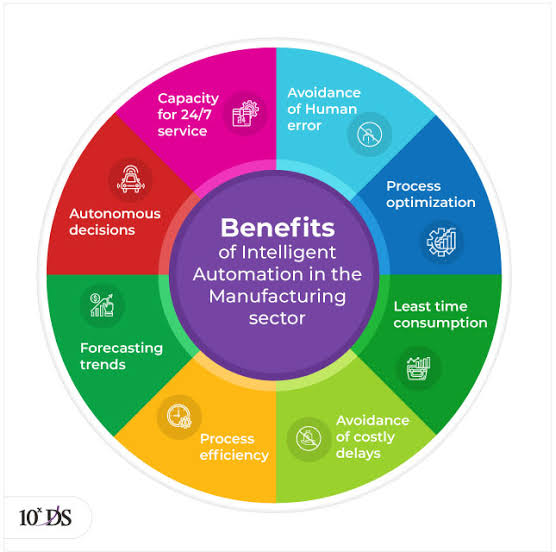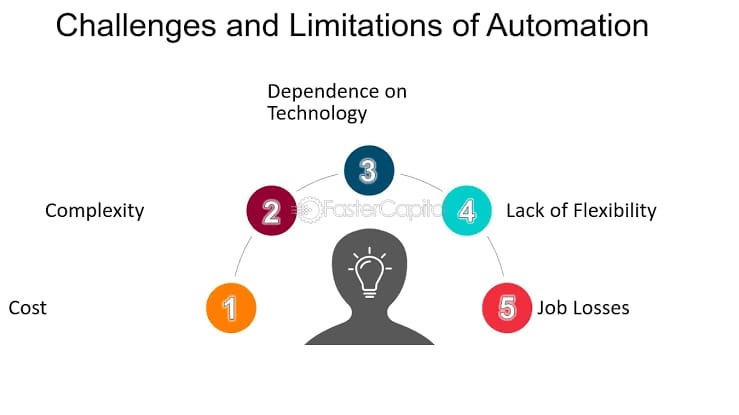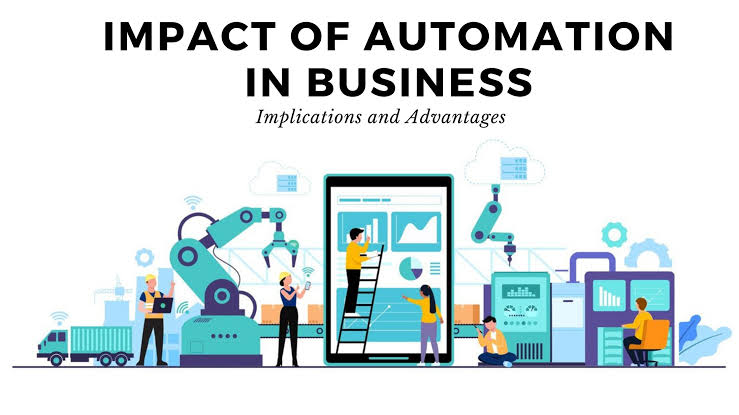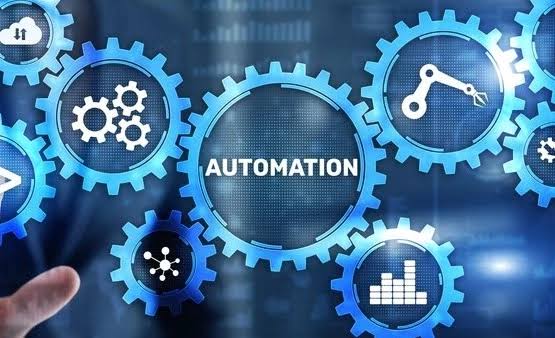What is Automation Services?

Service automation is the process of integrating all domain and functionality tools into various automation layers in order to have unified interface for all workflows. It is the process of automating events, processes, tasks and business functions. Service Automation is the process of integrating all domain and functionality tools into various automation layers in order to have unified interface for all workflows. It is the process of automating events, processes, tasks and business functions. Service automation helps in achieving multi-dimensional visibility into businesses and helps in streamlining the service process
Automation services, or service automation, is the process of using software, artificial intelligence, and other digital tools to automate tasks, processes, and business functions. The goal of automation services is to improve efficiency, reduce manual tasks, and improve the overall service delivery. Automation as a service (AaaS) is a software delivery model in which automation technology is provided to companies through on-demand, web-based solutions. As a form of software as a service (SaaS), AaaS allows companies to streamline operations, reduce costs, and improve efficiency without the need to create an in-house platform.
AaaS is closely linked to robotic process automation (RPA), which is any process automation that uses AI software to automate digital tasks.
The end goal of AaaS technology is to help businesses scale. With a flexible, custom-built solution by their side, ecommerce businesses can grow without being held back by the countless recurring actions that would otherwise need to be handled manually.
Artificial intelligence (AI) chatbots are one of the most common and effective forms of AaaS. We know what you’re thinking — chatbots are only used in customer service. While that’s certainly one area they shine, they can positively impact many parts of your business.

Automation services help businesses streamline processes, reduce manual tasks, and improve efficiency through technology. These services can cover a wide range of needs, including:
- Workflow Automation: Automates repetitive tasks in a business process, such as onboarding, data entry, and approvals, often using software like Zapier, Microsoft Power Automate, or Integromat.
- Robotic Process Automation (RPA): Uses “bots” to mimic human actions in software applications, making it useful for automating rule-based tasks in fields like finance, healthcare, and customer service. Popular RPA tools include UiPath, Automation Anywhere, and Blue Prism.
- Marketing Automation: Streamlines marketing activities like email campaigns, social media posting, and lead nurturing using platforms like HubSpot, Marketo, or Mailchimp.
- Customer Support Automation: Involves chatbots and automated response systems that can handle common inquiries, triage customer service issues, and enhance response times.
- IT Process Automation (ITPA): Automates IT-related tasks such as server management, software deployment, and network monitoring. Tools like Ansible, Puppet, and ServiceNow are commonly used for IT automation.
- Data Integration and ETL Automation: Automates data extraction, transformation, and loading (ETL) processes to consolidate data from different sources into a centralized system. Tools like Apache Nifi, Informatica, and Talend facilitate this process.
- Supply Chain and Inventory Management: Automation in supply chain tasks such as order processing, inventory tracking, and vendor management using software like SAP and Oracle.
- Document and Invoice Automation: Uses OCR (Optical Character Recognition) and AI to automate document handling, including invoice processing, document management, and compliance tracking.
Automation services can significantly improve operational efficiency, reduce costs, and enable employees to focus on higher-value tasks by eliminating routine, repetitive work.
Advantages

- Increased Efficiency and Productivity: Automation reduces time spent on repetitive tasks, allowing teams to focus on high-value activities. Machines can work continuously without breaks, speeding up production and service delivery.
- Cost Savings: By reducing manual labor, automation can significantly lower operational costs over time, particularly for large-scale operations.
- Improved Accuracy and Quality: Automation minimizes human error, enhancing the quality and consistency of outputs. This is particularly beneficial in sectors like manufacturing and data processing, where accuracy is essential.
- Enhanced Safety: In industries like manufacturing, mining, and chemicals, automating hazardous tasks protects human workers from dangerous conditions.
- Scalability: Automation allows companies to quickly scale up operations to meet demand without hiring and training additional staff.
- Better Compliance: Automated processes can adhere to regulatory standards with minimal deviation, reducing the risk of compliance-related penalties.
- Data Collection and Analysis: Automated systems can capture large amounts of data in real-time, helping companies make more informed decisions and optimize processes further.
Disadvantages

- High Initial Investment: Setting up automated systems, especially for complex tasks, requires a substantial initial investment in technology and training.
- Job Displacement: Automation can lead to job loss for roles that are replaced by machines or software, causing social and economic impacts.
- Dependence on Technology: Organizations may become overly reliant on technology, which can be problematic if systems fail or require maintenance.
- Limited Flexibility: Automated systems are often designed for specific tasks, which can make them less adaptable to changes or customizations.
- Maintenance Costs: Automated systems need regular maintenance, upgrades, and repairs, which can be costly and time-consuming.
- Cybersecurity Risks: Automated systems connected to networks are vulnerable to cyberattacks, which can compromise sensitive data and disrupt operations.
- Loss of Human Touch: In customer service and healthcare, automation may reduce the human interaction that is often crucial for customer satisfaction and patient care.
Limitations

- Complexity in Implementation: Developing, installing, and integrating automated systems, especially across multiple processes, can be complex and require specialized expertise.
- Limited Decision-Making Ability: Many automation systems rely on pre-defined rules and lack the cognitive flexibility of humans, making them ill-suited for complex or nuanced tasks.
- Inability to Handle Unexpected Situations: Automated systems can struggle with unpredictable or unusual scenarios that fall outside their programming.
- Scalability of Customization: Automating highly customized processes is challenging and costly, and it may be impractical for smaller operations or niche tasks.
- Regulatory Constraints: Some industries have strict regulations that limit the extent of automation allowed, especially where human oversight is required.
- Cultural Resistance: Employees and stakeholders may resist adopting automation due to concerns about job security or changes to established workflows.
Impact

- On Workforce: Automation reshapes workforce demands, with fewer manual roles and an increased need for tech-savvy, skilled workers. Upskilling and reskilling become essential to adapt to the changing job landscape.
- On Economy: Automation can drive economic growth by increasing productivity and reducing costs, but it may also lead to income disparity as certain jobs become obsolete.
- On Customer Experience: Automation can streamline processes like order fulfillment and support, improving customer satisfaction. However, over-automation might lead to a lack of personal interaction, potentially diminishing customer loyalty.
- On Innovation: Automation frees up resources and time, allowing organizations to invest more in research and development, potentially accelerating innovation.
- Environmental Impact: Automation in manufacturing can lead to more efficient use of resources and reduced waste. However, the production and disposal of automated equipment have environmental costs.
- On Business Continuity: Automation enhances business resilience by enabling remote monitoring, predictive maintenance, and continuity in operations, especially critical during unforeseen events.
- On Decision-Making: Automation supports data-driven decision-making, allowing businesses to optimize strategies based on real-time insights and trends, leading to better outcomes.
In summary, automation offers tremendous potential for efficiency and productivity, yet it requires careful planning to address its limitations and ethical implications.
Where can businesses leverage automation as a service?

1. Customer service
Capable of resolving up to 95% of customer questions, AI-powered chatbots can instantly handle the most common queries your users are asking.
And a higher level of self-service can greatly enhance your customer experience (CX). Chatbots deliver answers with speed, accuracy, and availability that human reps can’t match. Naturally, this boosts customer satisfaction and leaves more users walking away happy — 80% of customers who interact with chatbots have a positive experience.
2. Multilingual capabilities
Automation services can remove the biggest pain points tied to serving a multilingual or international customer base. Instead of relying on costly, sprawling call centers, businesses can exchange them for a scalable support solution.
AI chatbots currently help teams offer support in over 175 languages, highlighting that it doesn’t take a global workforce to cater to a global audience. With AaaS doing the heavy lifting, businesses can easily reach out to customers in their preferred language.
3. Ongoing quality assurance
AaaS doesn’t stop at responding to customer questions. Chatbots are a powerful solution for gathering and analyzing actionable customer feedback.
Manually collecting your shoppers’ comments and complaints is slow and tedious. With automation software at the helm, teams can quickly spot if things are working how they should or if the website, product, or business processes could be improved in any way.
AaaS also makes it easier to track your QA metrics and promote real-time, data-driven decisions. You can go so far as to automate A/B tests that let you effortlessly create, launch, and monitor experiments based on predefined goals.
4. Sales
Haphazard cold calling is so two thousand and late.
Automation-as-a-service software can help your sales department get with the times by handling every step of the sales cycle end-to-end: from initial outreach all the way to conversion.
With automated workflows, AaaS tools are capable of guiding shoppers through the customer journey. They can send out proactive messages to prevent cart abandonment, detect buying intent, and even craft personalized product recommendations in the form of interactive carousels.
5. Marketing
AaaS software’s presence in your marketing activities can be far-reaching.
AI chatbots can be employed to promote exclusive deals, offer discounts, and recommend products more relevant to shoppers based on their purchase history.
These platforms let you communicate with confidence, checking your spelling, fixing grammar mistakes, and translating messages whenever needed.
Generative AI tools can take marketing automation up a notch by crafting unique, on-brand messages that maintain your business’s tone and style across all your communication channels.
Conclusion

In summary, automation services are transforming the way businesses operate, making processes more efficient, cost-effective, and scalable. By reducing manual labor, automating repetitive tasks, and enhancing accuracy, these services allow companies to allocate resources to more strategic activities and improve overall productivity. Automation also facilitates real-time data analysis and decision-making, enabling organizations to respond faster to market changes and customer demands.
However, successful automation requires careful planning, integration with existing systems, and continuous monitoring to ensure optimal performance and alignment with business goals. Potential challenges include upfront costs, the need for skilled personnel to manage and maintain automated systems, and potential disruptions to the workforce. With a balanced approach, companies can leverage automation services to drive growth, innovation, and competitive advantage in an increasingly digital world.
